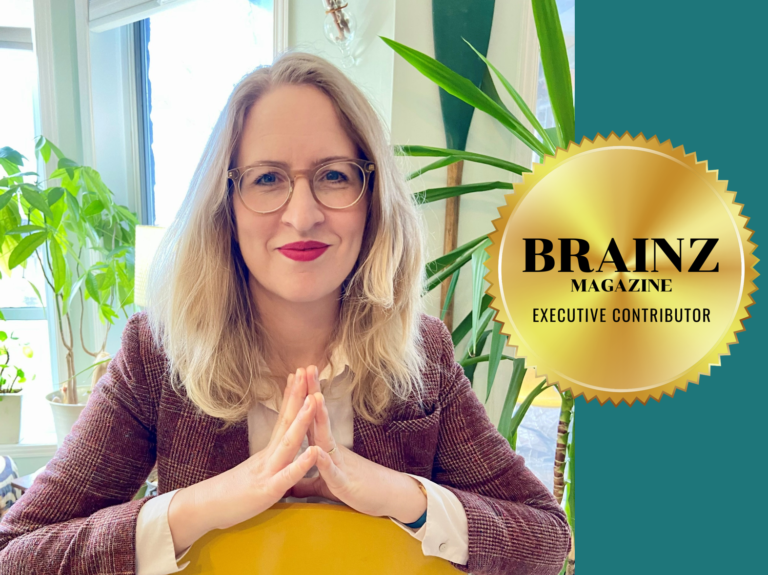The Power of Letting Go: 9 Key Strategies for Personal Growth

Table of Contents
Introduction: The Art of Releasing What Holds Us Back
In our journey through life, we often cling to past experiences, emotions, or relationships that no longer serve our best interests. This attachment, while comforting at times, can impede our personal and professional growth. But have you ever stopped to ask yourself, “What could my life look like if I freed myself from the burdens of the past?” “The Power of Letting Go” is not just a concept but a transformative practice that allows us to embrace change, evolve, and integrate this principle into our daily lives. In this blog post, we’ll explore the importance of letting go and delve into nine key strategies to help you release what no longer serves you.
1. Understanding the Importance of Letting Go
Mastering the art of letting go is crucial not only for achieving mental clarity and emotional freedom but also might be key to a longer, healthier life. This process requires actively shedding attachments to past events, toxic relationships, unresolved resentments, anger, or self-limiting beliefs. Visualize each grudge you hold as extra weight in a backpack you’re carrying. Think of how liberating it would feel to let go of some of these burdens, lighten your load, or even better, remove the backpack altogether! Adopting the practice of letting go can lead to significant transformations in both your personal and professional life, enabling you to live a life filled with vitality and purpose.
2. The Science Behind Letting Go
Extensive research in the fields of psychology and neuroscience reveals profound benefits to practicing the art of letting go. Studies indicate a clear link between this practice and improvements in well-being, stress reduction, and overall physical health. A notable 12-year research project conducted by Harvard University and the Department of Psychiatry at the University of Rochester Medical Center highlights the significant impact of suppressing emotions on mortality rates. The study found a striking 70% increase in cancer-related deaths among individuals who scored high on the “concealing emotions” scale.
The detrimental health effects of harboring negative emotions like anger and resentment are increasingly understood. A key aspect is the release of cortisol during anger or fear, a hormone meant for short-term survival in fight-or-flight situations. In contemporary life, however, frequent cortisol release can disrupt the immune system, harm thyroid function, reduce bone density, and cause obesity due to altered blood sugar levels. Additionally, sustained high cortisol levels can exacerbate autoimmune diseases and lower the count of natural killer cells in our bloodstream. Given these insights, this topic warrants more than just a cursory look.
Nine Strategies for Harnessing The Power of Letting Go
1. Mindfulness and Meditation
Practicing mindfulness and meditation can be an effective way to let go. These practices help us become more aware of our thoughts and feelings, and teach us to become non-judgmental observants in our quest to release what no longer serves us. If you’re new to these concepts or simply would like some extra clarification please click here for practical steps to incorporate mindfulness into your daily routine, reinforcing the power of letting go through focused attention and awareness.
2. Journaling for Emotional Release

Journaling is a valuable tool for processing and understanding emotions, assisting in identifying what needs to be released. Choose a quiet spot, take a deep breath to center yourself, and then write freely. When you focus on your feelings, delve deeper into their origins. Explore the underlying causes of your emotions – think about the events, interactions, or memories that might have sparked these feelings. Consider the context and the deeper emotional patterns that are connected to these experiences. This introspection helps in understanding not just what you feel, but why you feel it, offering a clearer path to emotional processing and healing.
Real-Life Example:
Let’s consider the case of “Emily”. Emily came to me feeling lost and unable to pinpoint the source of her emotional distress. I encouraged her to explore her feelings through focused journaling on a specific topic that seemed to me to be at the heart of her unease. Initially, Emily was apprehensive, but as she began to write, a flood of unexpected emotions and hidden insights surfaced. This journaling journey became a powerful tool for her, unlocking answers to questions she hadn’t even fully articulated and offering a new perspective on her life. The process was transformative for Emily, leading to a greater understanding of herself and significant improvements in her overall well-being.
*Note: The client’s name has been changed to protect my client’s identity
3. Physical Decluttering
Clearing physical space can have a profound impact on your mental and emotional well-being. By decluttering your surroundings and letting go of items that no longer serve you, you create a sense of spaciousness and clarity in your environment, which can translate into a calmer state of mind. If you’re unsure about where to begin with decluttering, I recommend exploring Marie Kondo’s philosophy, which emphasizes keeping items that ‘spark joy.’ This approach guides you to thoughtfully assess the purpose and emotional impact of each item, leading to a more organized and peaceful living environment.
4. Setting Boundaries
Learning to set boundaries is a crucial first step in releasing yourself from toxic relationships and situations. By clearly defining and communicating your limits, you begin to cultivate an environment where healthy relationships can thrive. This act of boundary-setting not only fosters growth in positive connections but also naturally discourages the continuation of unhealthy ones. In such a space, relationships that are detrimental to your well-being struggle to persist, as they find no foothold in an environment defined by respect and personal limits. Remember, prioritizing your own well-being is essential in this process.
5. Practicing Forgiveness
Forgiveness is a powerful act of letting go. By releasing resentment and anger towards others or yourself, you free up mental and emotional energy that can be redirected towards healing and personal growth.
6. Embracing Impermanence
Recognizing the impermanent nature of life can help in letting go of attachments and expectations. Understanding that everything is in a constant state of change allows you to flow with life’s transitions and embrace the present moment more fully.
7. Physical Activities as a Release

Engaging in physical activities like yoga, dancing, or even a simple walk can facilitate emotional release. The movement helps to shift energy and can create a sense of liberation as the stagnant energy is released. The benefits of yoga for emotional release are well-documented, offering a blend of physical and mental release, thus contributing to the power of letting go.
Real-Life Example:
During a session with “Michael,” we delved into exercise options for his anxiety. His long-held interest in martial arts surfaced, presenting a perfect opportunity. He was excited to find that a nearby dojo offered Brazilian Jiu-Jitsu, a martial art he was curious about. Skeptical yet open-minded, Michael started attending classes. He soon realized the significant benefits of Brazilian Jiu-Jitsu’s physical discipline and mental focus for his emotional well-being. The practice not only eased his anxiety but also instilled a sense of balance in his life, transforming a lifelong curiosity into a therapeutic journey.
*Note: The client’s name has been changed to protect his privacy.
8. Building a Support Network
Having a support network of friends, family, or a support group offers emotional encouragement and different perspectives. Discussing your experiences with letting go with others brings validation and understanding, easing the journey and reducing feelings of isolation. An accountability partner can also be beneficial, ensuring you remain committed to your progress.
9. Professional Guidance from a Life Coach
A life coach can offer expert guidance and support, helping to identify and release limiting beliefs and patterns. Their personalized approach can accelerate your journey towards letting go and achieving personal growth.
Conclusion: Embracing the Journey with a Life Coach

The journey of letting go is a transformative process that requires patience, courage, and self-compassion. It involves understanding that clinging to the past can prevent us from fully embracing our present and future. By implementing the nine strategies discussed, you can make significant strides in this journey, reinforcing the power of letting go.
However, embarking on this journey alone can be challenging. This is where the personalized guidance of a life coach can be invaluable. As a certified life coach, I can offer you more than just techniques and tools for letting go. Together, we can uncover and address deep-seated issues, identify limiting beliefs, and transform them into empowering ones.
Why Work With a Life Coach?
- Personalized Approach: Every individual’s journey is unique. I provide tailored coaching that aligns with your specific needs and goals.
- Accountability and Support: It’s easy to get off track when you’re going at it alone. I will be there to offer support, keep you focused, and celebrate your progress.
- Accelerated Growth: With professional guidance, you can achieve your goals more quickly and efficiently, avoiding common pitfalls and staying on the path to success.
- Empowerment: I will equip you with the skills and mindset to not only let go but to thrive in all aspects of your life.
Remember, letting go is not about losing a part of yourself; it’s about gaining freedom, clarity, and the ability to move forward with purpose and joy.

If you’re ready to embrace the power of letting go and want to see how I can specifically help you, I invite you to schedule a FREE 30 minute consultation with me today. Let’s discuss your challenges and aspirations and start your journey towards becoming the most limitless version of yourself!
Join the Conversation
As we reach the end of this journey through “The Power of Letting Go,” I invite you to become an active part of our growing community. Your experiences, insights, and stories are valuable, not just to me, but to others who are on similar paths.
Share Your Story:
- Have you tried any of these strategies for letting go?
- What challenges have you faced in your journey towards personal growth?
- Do you have a personal success story or a learning experience that could inspire others?
Leave a Comment Below:
- Share your thoughts, experiences, or any questions you might have.
- Engage with others in the comments – your insights could be the encouragement someone else needs.
- If you prefer more privacy, feel free to reach out directly via email or social media.
This is more than just a blog; it’s a community of like-minded individuals striving for growth, understanding, and transformation. Your voice is a crucial part of this community. So, let’s start a conversation and support each other in our journeys of letting go and personal development.
Disclaimer: This blog post, including the strategies and stories shared, is for informational and educational purposes only. It is not intended to provide medical or psychological advice or to replace professional treatment or consultation. Each individual’s circumstances are unique, and professional advice should always be sought in serious emotional distress or mental health issues. If you are experiencing significant emotional or psychological difficulties, please consult with a qualified healthcare professional.






